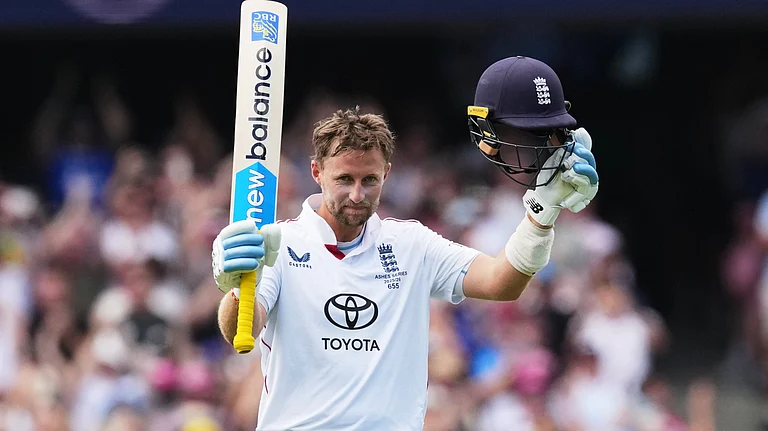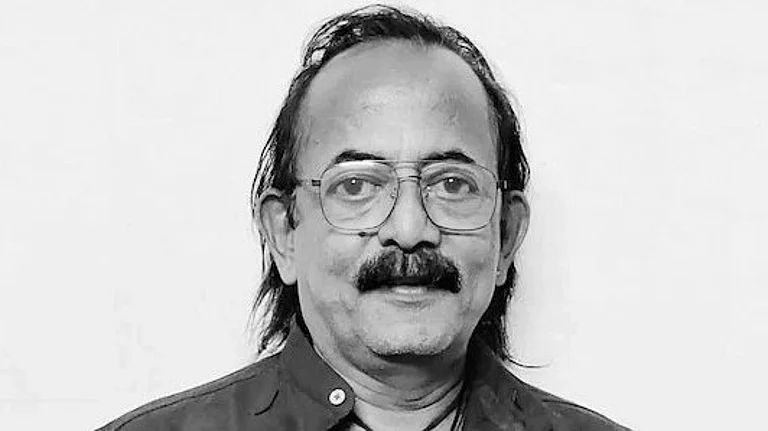The frenzied sprucing up of the Indian capital where dirt and squalor are a decades-old ‘normal’ and the plethora of hoardings—not just limited to the ‘standard diplomatic arrival route’ from the airport to Lutyens Delhi—evoked a sense of déjà vu, but with a difference. Despite the compelling national movement against the colonial order, Indians were unable to shed the deep-seated belief in the necessity to ‘impress’ non-Indians, especially from western countries. Very early, and even before Independence, nationalists first gained acceptance in the west—Mahatma Gandhi too became an international icon first, after the colonial administration was rattled by the Salt Satyagraha and Dandi March.
Jawaharlal Nehru’s international profile benefited his domestic standing too despite the fact that he did not make much effort to publicise the global initiatives. He did not need to buttress his electoral standing by showcasing his global eminence. Nehru faltered post the 1962 war with China, but he did not have to face elections, so we do not know if he would have started harnessing ‘global endorsement’ domestically. Lal Bahadur Shastri did not get a full tenure to bloom on the international arena. But Indira Gandhi created opportunities and her domestic stature was enhanced dramatically, especially after the image of Durga was fastened to her, the result of her ‘tough’ handling of Pakistan in the course of the Bangladeshi freedom movement and the 1971 war.
By the time Indira Gandhi returned to office in January 1980, after a humiliating electoral rout followed by three years in virtual political wilderness, she began looking for ways to enhance her support within the country. Her second tenure was, however, riddled with domestic turbulence. With Punjab not so gradually becoming a problem to which she had no solutions to offer, Gandhi used the Non Aligned Movement’s (NAM’s) 7th Summit meeting of the heads of State or government held in New Delhi in March 1983 to emerge once again as one of the tallest leaders of the non-aligned bloc, which at that time was an important global group. It benefited her national standing too.
The Delhi meeting was important for Indira Gandhi for two reasons: One, it was being held in India for the first time, and two, the chairpersonship was to pass from Fidel Castro to her. The five-day summit was a rousing success for the Indian premier—for the infamous Castro bear hug as well as the diplomatic successes. Alas, there was none in the G20 group to ensure Xi Jinping’s presence. It was also a less cohesive grouping than what NAM used to be then.

The NAM summit was the first occasion when an Indian political leader successfully used foreign policy and its “performative aspects to rehabilitate her image” as a national hero which had taken a beating when she clung on to power in 1975 and imposed ‘Emergency’ during which all fundamental rights were suspended.
Almost exactly 40 years later, Prime Minister Narendra Modi secured not just a similar opportunity, but one which was bigger for two reasons. One, that the presidency passed on to India with him as the spearhead in November last year and he got an entire year to host events. Two, diplomacy has become more intensive in these past four decades; there are more regular meetings between not just the heads of State or government, but also between their ministers and officials. As a result, the summit in New Delhi came as a ‘crowning glory’ for all that had happened through the past year. From the time Modi assumed office in 2014, he consistently used his 73 trips abroad, in the course of which he has spent 275 days outside India, to publicise the claim that he has greatly enhanced India’s izzat or prestige in the global theatre. There has also been a parallel claim, taken through social media to the people—that during Modi’s tenure, ‘respect’ for the Indian passport has grown. While the jury is still out with regard to the New Delhi summit of G20 and foreign policy experts remain ambivalent about the claim of enhanced global stature, the Indian passport—when evaluated on the basis of the number of countries where Indians can travel without prior visa—continues to languish fairly low down the list.
Yet, it cannot be denied that the G20 came at a very opportune time for Modi to launch his election campaign for the next parliamentary polls. In fact, the Prime Minister and his party have been in election mode for several weeks. Furthermore, the decisions to convene a Special Session of Parliament and the formation of the High Level Committee, headed by former President Ram Nath Kovind, to recommend ways in which parliamentary, state assembly and Panchayat elections can be held across India simultaneously, has only catalysed the emergence of a host of conjectures.

The moot question is whether India’s mega G20 summit will yield political and electoral dividends for the BJP and Modi. Will his publicised image of a leader more warmly welcomed across the world than his immediate predecessor be further buoyed? It is true that like Indira Gandhi, Modi too used what academic Smriti Swakar writes about the former: “Foreign policy as an instrument of image building and to mobilise support amongst an ascending yet influential, urban middle class.” Like Gandhi—the only other Indian Prime Minister to have been affixed the ‘authoritarian’ tag—Modi too has “employed foreign policy as ‘spectacle’ to remake (his) image”.
Modi has the advantage of technology and a more widespread, almost omnipresent, media where every citizen is either a combination of cameraperson-editor-director-scriptwriter-distributor or a direct consumer who needs nothing but a mobile phone. Politics, and this includes diplomacy, is a more ‘accessible’ spectacle for people’s consumption and this, like in the past, requires no ‘distilling’ that publications like this, or its online platform, do. The crassness of what is consumed as ‘news’ is matched by the coarseness in today’s political vocabulary used by most leaders of course, beginning with Modi.
From the time that he assumed office, and more so after November 2022 when India’s G20 presidency began, Modi has successfully furthered his cult by the diplomatic engagements surrounding this summit. But there are limitations too, as advantages are balanced by downsides—the biggest ones being the short attention span, or people being unable to process simultaneous narratives travelling at ferocious pace through airwaves. Even Modi too is never solely broadcasting a single issue. While this eliminates critical space, it makes the support shaky, as has happened in several state assembly elections since 2014 because everyday concerns find a way to occupy mass mind-spaces, most recently in Karnataka, despite Modi being his party’s primary campaigner. In terms of success, experts will weigh in on whether the NAM Summit of 1983 was a bigger success than this one. Either way, Modi would do well to
remember that appearances are deceptive. Despite accolades in March-April 1983, there is no certainty that Indira Gandhi, had she not been assassinated, would not have faced a huge challenge to return to office in elections that were due in January 1985.
(Views expressed are personal)
(This appeared in the print as 'Electoral Dividends?')
Nilanjan Mukhopadhyay is the author of The Demolition and the Verdict: Ayodhya and the Project to Reconfigure India




















